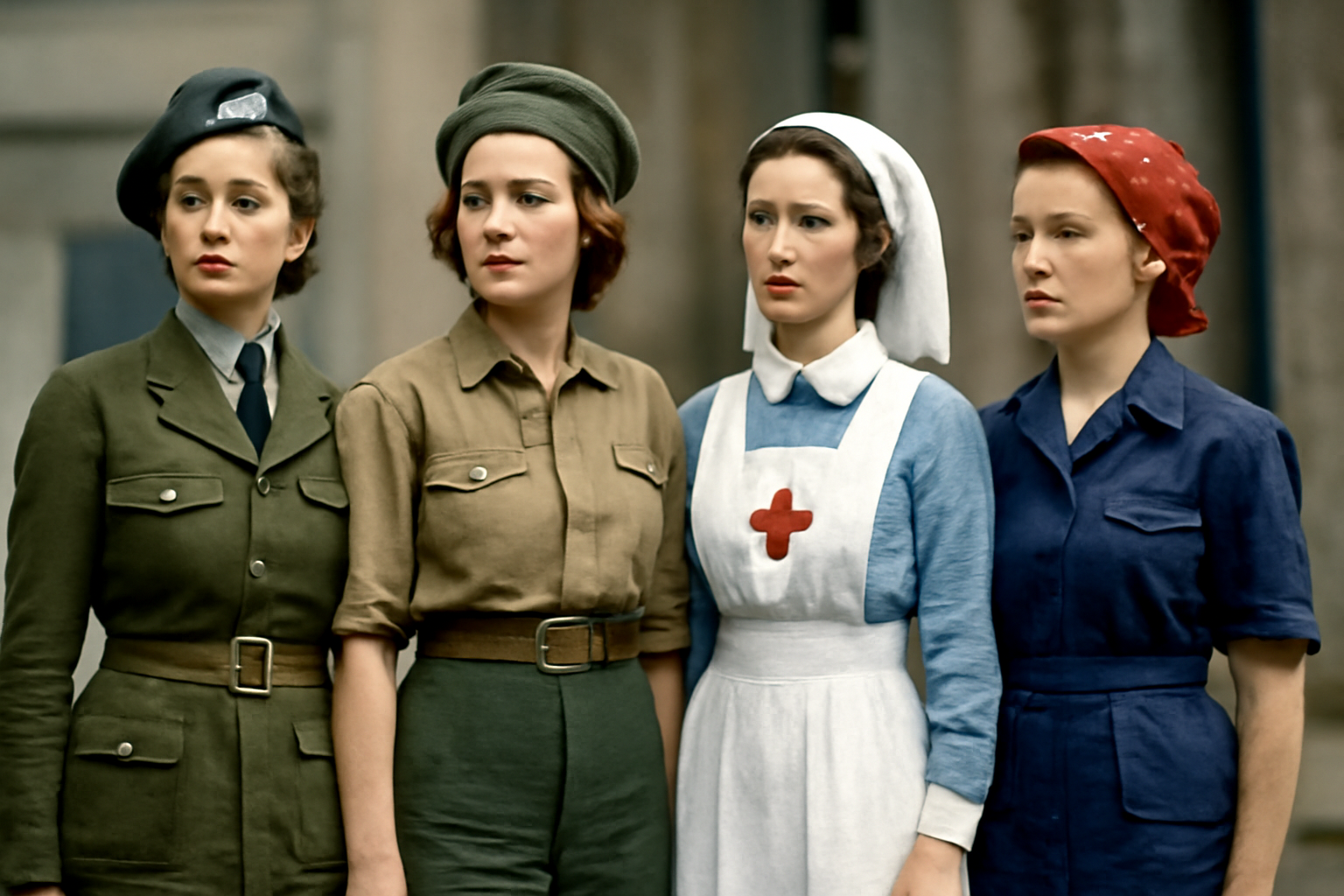
WWII Women’s Civilian Uniforms: A Complete Guide to Civilian Roles and Uniforms During World War II
Published on May 27, 2025
WWII Women’s Civilian Uniforms: A Complete Guide to Civilian Roles and Uniforms During World War II
World War II was an era of profound change—not just in global politics and military technology but also in social roles. One of the most significant shifts was the entrance of women into the workforce and civil defense roles, traditionally dominated by men. These changes necessitated distinct uniforms for women engaged in civilian duties. This guide delves deep into WWII women’s civilian uniforms, examining their function, symbolism, and legacy.
The Importance of Women’s Roles During WWII
When millions of men went off to fight, women stepped into vital roles on the home front. Their contributions in factories, hospitals, farms, civil defense, and government offices were indispensable to the war effort. To symbolize their service, distinct WWII women’s civilian uniforms were created—practical, durable, and designed for diverse roles.
Women were not just supporting the war from behind the scenes; they were actively engaged in roles like:
- Factory workers in munitions and vehicle manufacturing
- Nurses and medical personnel
- Air raid wardens and civil defense officers
- Postal workers and clerical staff
- Agricultural laborers
Each role required a uniform that balanced functionality with the social expectations of the time.
Characteristics of WWII Women’s Civilian Uniforms
Unlike military uniforms, which were standardized for combat effectiveness and unit identification, civilian uniforms for women varied widely but shared common features:
Practicality and Durability
Women’s civilian uniforms were designed to endure long working hours and tough conditions. They often included sturdy fabrics such as wool blends or heavy cotton. Many featured button-up shirts, trousers or skirts, and jackets that allowed ease of movement.
Symbolism and Identification
Civilian uniforms often bore badges, insignias, or colored patches identifying the wearer’s role, such as the Red Cross emblem for nurses or badges for air raid wardens. These identifiers gave women a sense of pride and authority in their roles.
Adapted for Gender and Function
While men’s military uniforms emphasized combat readiness, women’s uniforms were tailored for a blend of professionalism and femininity. For example, skirts were common, but trousers were also adopted in industrial roles. Headgear varied from practical caps to berets.
Examples of WWII Women’s Civilian Uniforms
The British Women’s Land Army
One iconic example is the British Women's Land Army (WLA), where women worked on farms to replace men who joined the military. Their uniforms typically included overalls or tunics, woolen skirts, and headscarves or berets, embodying both practicality and patriotism.
The American Rosie the Riveter Look
In the United States, the "Rosie the Riveter" image became symbolic of women working in war industries. Women wore denim coveralls or jumpsuits, often with rolled-up sleeves and red bandanas, which became an enduring cultural icon of female empowerment during the war.
Nurses and Medical Personnel
Women nurses wore white or pale blue uniforms with aprons and caps, distinguishing them as frontline caregivers. Their uniforms were designed for hygiene and ease of movement, often adorned with the Red Cross emblem.
Connection to Military Uniforms: German Afrika Korps and WW1 German Officer Uniforms
To fully appreciate the context of WWII women’s civilian uniforms, it’s helpful to understand the broader spectrum of wartime attire, including famous military uniforms.
German Afrika Korps Uniforms
The German Afrika Korps, active during WWII in North Africa, was known for its distinctive lightweight uniforms suitable for desert warfare. These uniforms featured tan and light khaki colors, short-sleeved shirts, and practical field gear designed to combat the harsh climate. While primarily male military uniforms, their functional design contrasts with the civilian uniforms worn by women back home.
World War 1 German Officer Uniforms
Though from an earlier period, WW1 German officer uniforms set a precedent in military style, often characterized by tailored tunics, high collars, and distinctive insignia. These details influenced WWII uniforms, highlighting the evolution of military attire that ran parallel to civilian clothing changes during the 1940s.
Why WWII Women’s Civilian Uniforms Matter Today
The story of WWII women’s civilian uniforms is more than just a fashion history lesson; it represents a significant cultural and social shift. These uniforms symbolize women stepping into roles vital to national survival, challenging traditional gender norms, and paving the way for future generations.
For collectors, historians, and reenactors, these uniforms are prized for their historical accuracy and the stories they tell about resilience, adaptation, and unity during wartime.
Conclusion
WWII women’s civilian uniforms tell a powerful story of courage, duty, and change. From factory floors to rural fields, from medical tents to civil defense posts, these uniforms were worn by women who helped shape the course of history. By exploring these uniforms alongside iconic military attire like German Afrika Korps uniforms and WW1 German officer uniforms, we gain a deeper understanding of the era’s complexity and the enduring legacy of those who lived it.
If you’re interested in exploring authentic WWII uniforms or replicas, including women’s civilian attire and famous military uniforms, visit Paddelaters.com for detailed collections and historical insights.
